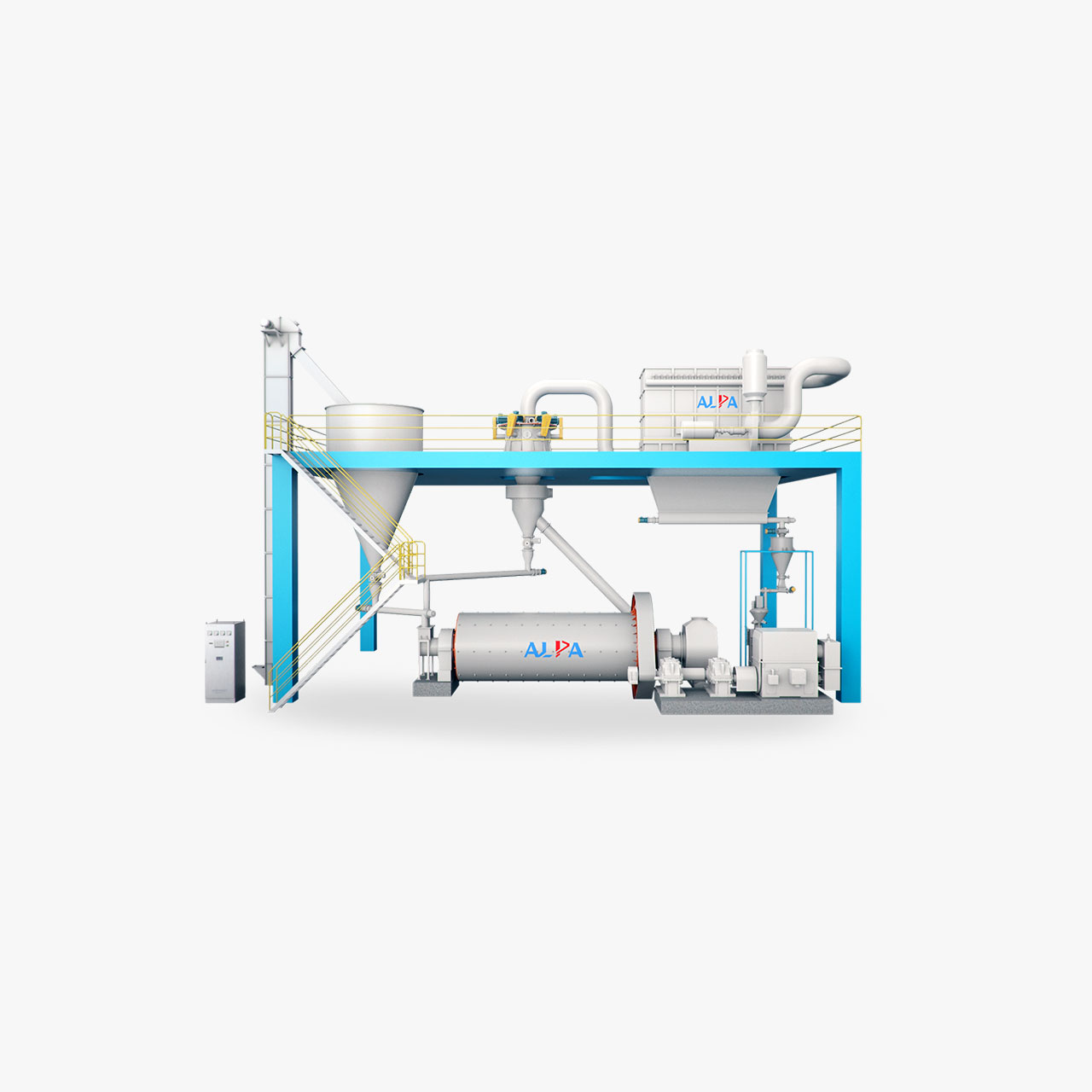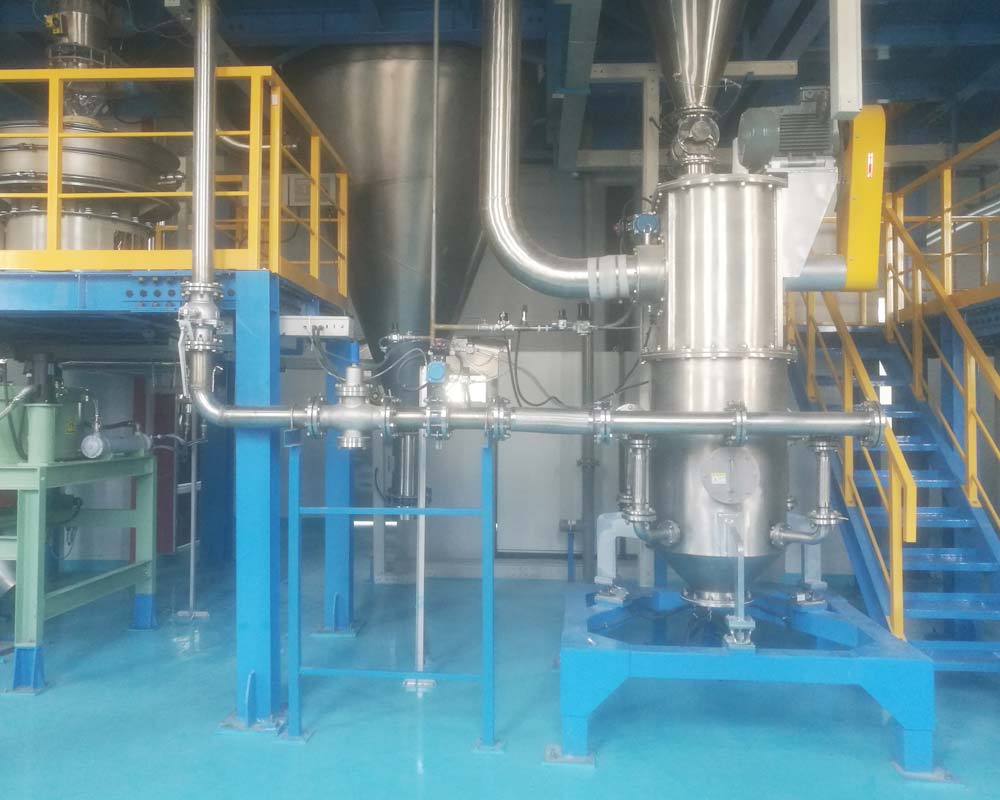Precautions for the use of stainless steel jet mill
The stainless steel jet mill is a kind of jet mill. It is different from the ordinary jet mill only in material. The stainless steel jet mill is suitable for medicine and food or materials with requirements for purity, so is there any difference in the use of this equipment?
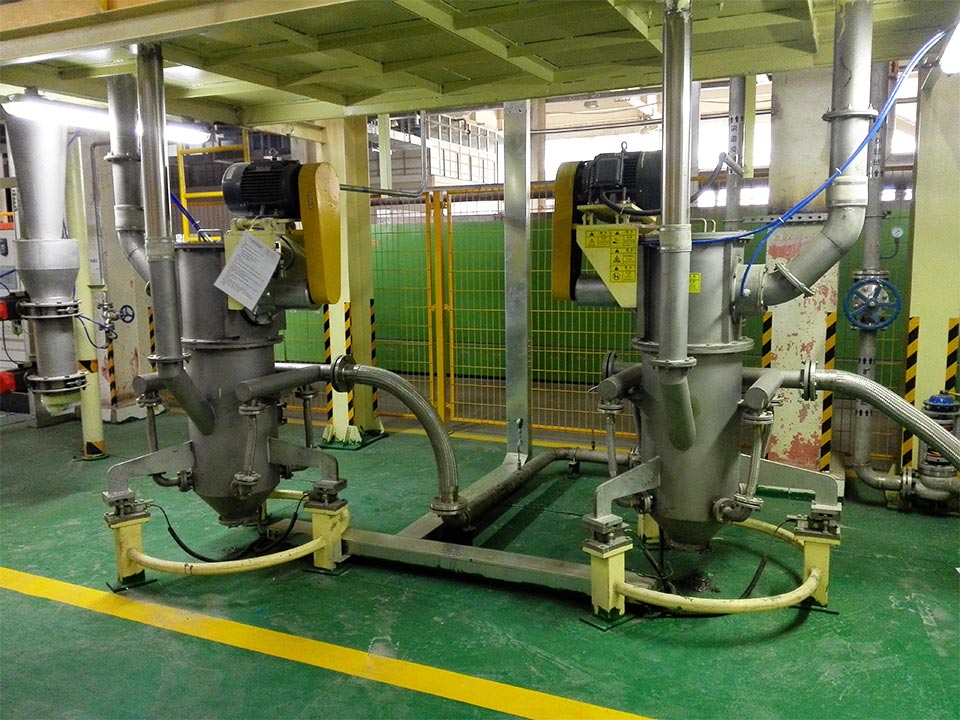
1. Before using the stainless steel jet mill, check whether all the fasteners of the machine are tightened and the belt is tight.
2. The rotation direction of the spindle must be in accordance with the direction of the arrow shown on the protective cover, otherwise it will damage the machine and may cause personal injury.
3. Check whether the electrical appliances of the stainless steel grinder are complete.
4. Check whether there are any hard objects such as metal in the crushing chamber of the stainless steel crusher, otherwise the cutters will be damaged and the operation of the machine will be affected.
5. The purity of the material must be checked before crushing, and no hard metal debris is allowed to be mixed in, so as to avoid damage to the tool or cause burning and other accidents.
6. The oil cup on the machine should be filled with lubricating oil frequently to ensure the normal operation of the machine.
7. Stop feeding before stopping the machine. If you do not continue to use it, remove the leftovers in the machine.
8. Regularly check whether the cutter and the screen are damaged. If damaged, it should be replaced immediately.
9. The machine body will vibrate slightly when in use. Be sure to tighten the machine cover connection handle to avoid accidents.
Cleaning items:
1. Cleaning other parts of the jet mill: Mainly clean the cover of the mill and the parts with screws on the outside. These areas can be cleaned by lightly brushing with a brush. If necessary, clean them with water or detergent.
2. Cleaning the cabin of the grinder. The machine room of the grinder is what we call the grinding chamber. The crushing of items is carried out in the grinding chamber, so it is the head part of the part that is mainly cleaned.
How to ensure the working efficiency of the ball mill?
Ball mills are mainly used in ore grinding and milling industries. Many materials in daily life need to be processed by ball mills. This also shows that ball mills play an important role in the industry.
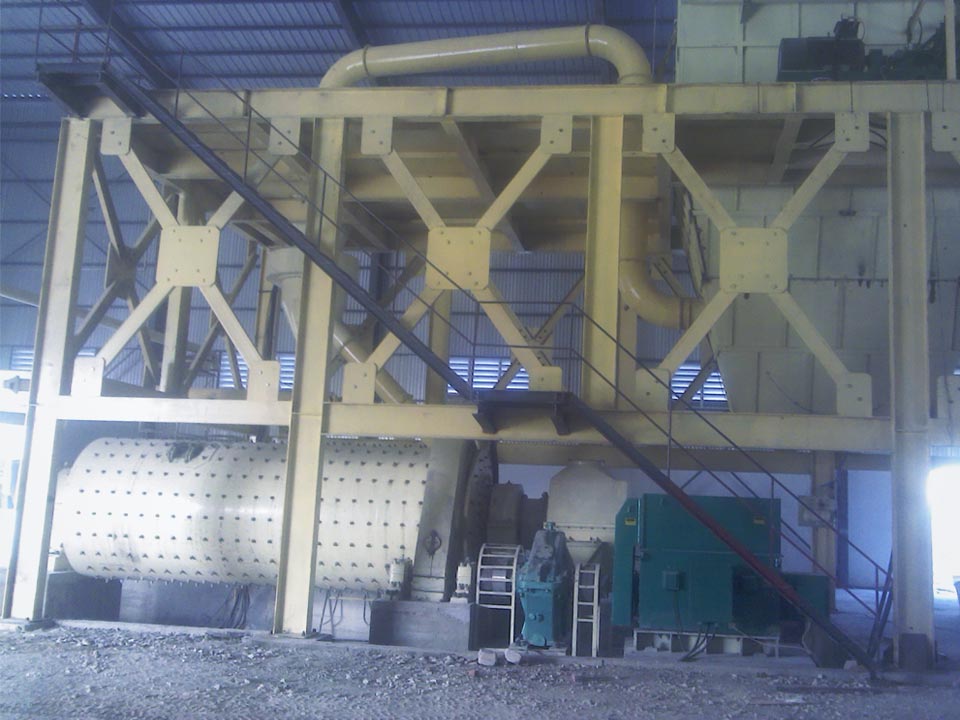
How to ensure the working efficiency of the ball mill? What are the prerequisites for the stable operation of the ball mill?
- Choose suitable ball mill equipment (determine the type of ball mill)
Ball mills can be divided into many categories according to different uses. Different types of ball mills have considerable differences in function and structure. To make the ball mills run stably and efficiently, you need to choose the correct type of ball mill.
- Selection of supporting equipment
As a stand-alone equipment for grinding ore, the main work of the ball mill is to grind the ore from large particles into small particles. However, the ore production line often includes many supporting equipment to operate together. The ore is first crushed and then enters the ball milling machine to powder, and then goes through the classification and beneficiation process. The output has a great influence. The particle size and uniformity of the crusher directly affects the quality of the feed of the ball mill. After relatively good materials enter the ball mill, the grinding time and power consumption will be relatively reduced, which improves the work efficiency of the ball mill. .
- Maintenance is very important
During the use of large-scale equipment such as ball mills, it is in direct contact with the ore, and the liner needs to be regularly inspected and replaced. If it is not replaced in time, it may damage the equipment cylinder and reduce the output. It is also necessary to check the wear of the motor, reducer gears, gear oil, bearings and bearing seats, and the oil circuit. Once there is a decrease in output or abnormal noise during the production process, it needs to be stopped immediately for inspection. Find the source of the problem, repair and replace parts in time. Therefore, the maintenance of the ball mill is a key factor affecting the efficiency of the equipment.
- Perform operations in accordance with operating procedures
The parameters of the maximum load and the longest working time of the ball mill are based on rigorous scientific calculations, which specifically involve many professional knowledge such as materials science and mechanics. Many users in order to increase output, extend the normal use cycle of the equipment or modify the equipment operating parameters by themselves, these are not advisable. It does increase the economic benefits for the user in the short term, but the life and safety of the equipment are greatly damaged. Hidden dangers have a great impact on long-term continuous production.
Cleaning method of each part of laboratory jet mill
Laboratory jet mill is a small area, easy to operate, easy to clean equipment, usually used for experiments or small batch processing. The laboratory jet mill is mainly a spiral jet mill. The machine is mainly composed of 4 parts, including the main body, feeder, gas path box, and collector. The following issues should be paid attention to when cleaning.
The main part of the grinding machine is the main part of the laboratory jet mill, which is generally made of 304 or 316L. The commonly used material in the pharmaceutical industry is 316L stainless steel, which has good corrosion resistance. However, even the best stainless steel will rust when it encounters strong oxidizers or is exposed to a humid environment for a long time. Therefore, after each sample of the grinder, it should be cleaned and dried so that it can be used again next time.
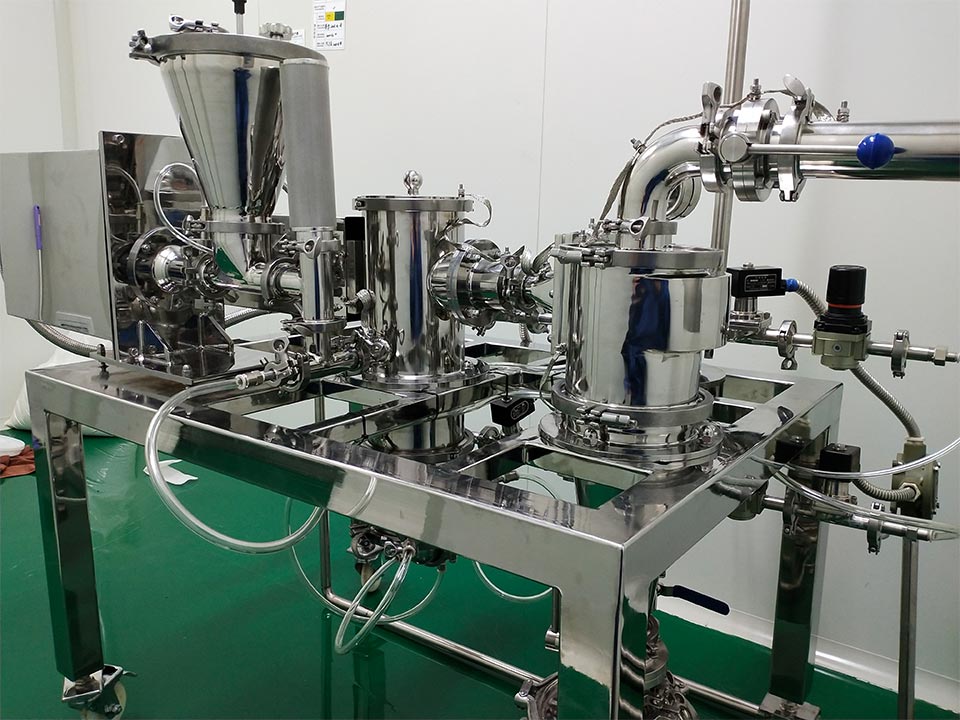
For cleaning the inner wall, it is not recommended to use a hard cleaning cloth of steel wire ball to clean the surface to avoid surface scratches. The nozzle aperture of the laboratory jet mill is very small and may not be directly cleaned. It is recommended to soak in an organic solvent after each use. It is best to place it in an ultrasonic cleaning machine for cleaner cleaning.
Feeder: There are electrical components, and the housing is equipped with a dust-proof device. When cleaning and cleaning each time, do not let water or dust enter the electrical components. The parts in contact with the same materials should be dried and stored dry after cleaning.
The gas circuit box and the shell material are generally made of stainless steel 304. The interior is the pipeline layout, pressure gauge, and pressure regulator. Each time you make a sample, there may be powder sticking to the surface. If the surface is not made Clean, long time, it will cause corrosion. In addition, the internal pipelines, some are made of hoses, have a certain degree of aging. If the machine is used for more than 5 years, pay attention to the leakage of the internal pipelines. If it sounds, replace the hose with a new one in time.
In addition to the above-mentioned normal internal surface maintenance attention, the maintenance of the collector mainly pays attention to the cleaning of the filter bag. The surface of the filter bag is covered with a layer of PTFE film. During the cleaning process, do not rub it hard to avoid damaging the surface film. If the membrane layer is found to be damaged, it should be replaced in time. It is recommended to prepare a few more filter bags. It is not recommended to use a set of filter bags with multiple varieties.
How to ventilate the ball mill
Ventilation in the ball mill is a problem that should be paid attention to during the work of the beneficiation ball mill equipment. The material generates a lot of heat during the grinding process, which greatly increases the temperature in the mill and the temperature of the material exiting the grinding, which deteriorates the operation and affects the production efficiency of the ball mill. Therefore, internal ventilation is very important in the work of the ball mill, which has a significant impact on the output and quality of the mill. It can be said without hesitation that the internal ventilation of the ball mill equipment can directly affect the efficiency of the grinding.
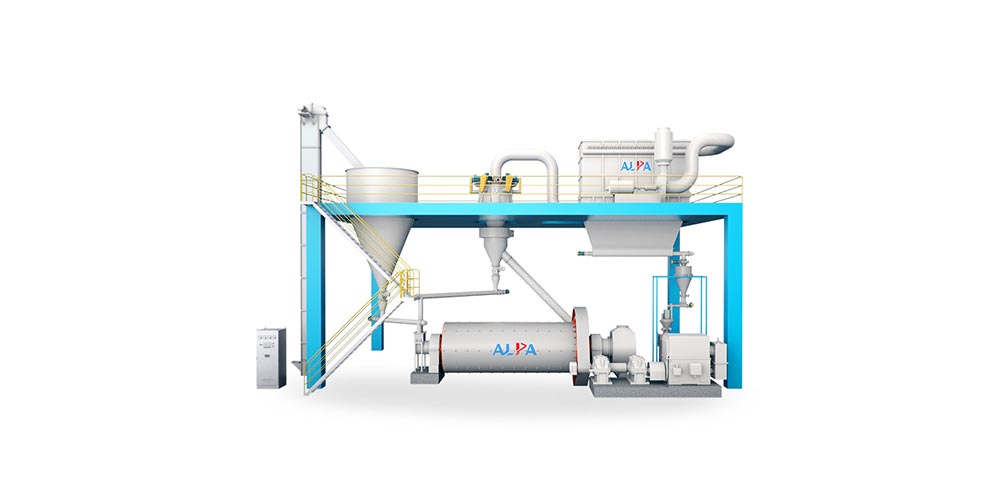
The ventilation effect of the ball mill is roughly in two aspects: one is to discharge the fine powder in the mill in time, so as not to affect the grinding efficiency; second, to reduce the temperature in the mill to avoid the grate of the gypsum dewatering tail bin paste ball. When the material moisture is too large and the mill has poor ventilation, the water vapor in the mill is difficult to discharge, not only the wet fine powder adheres to the grate, but also reduces the throughput and flow rate of the material per unit time. At the same time, when these grinding bodies grind materials, due to static electricity, the working surface of the liner will be attached to form a cushion layer, which will greatly weaken the impact and crushing function of the grinding bodies on the materials. When the thickness of the fine powder adhered to the surface of the lining board reaches 1mm, the impact force of the grinding body on the material can be reduced to one third when there is no material, which in turn leads to a decrease in the output of the mill and an increase in the power consumption of the grinding.
In the face of these problems of the ball mill, a simpler solution is to add an axial fan on the top of the exhaust tube of the mill tail, and at the same time seal and plug the mill rotary screen, discharge chute and other parts to prevent the short circuit of the mill ventilation due to air leakage. When the ball mill is working, the torque is transmitted to the large and small gears of the ball mill through the motor and reducer, so that the barrel of the ball mill rotates. Due to the rotation of the barrel of the ball mill and the cylinder liner, a part of the steel ball is brought to a certain height. The free fall motion produces impact force and hits the material in the cylinder, and the rest of the steel balls fall down to produce friction and the material is mixed together. As the cylinder rotates, it constantly collides and grinds with the material, so that the inside of the mill is ventilated smoothly. , It also completely solves the problem of grinding head dust. Similarly, the air lock system must also be done well, otherwise, the fan air will be drawn directly from the discharge port, forming a ventilation short circuit, and there will be not much air in the mill.
In the production of ball mills, if you have a detailed understanding of the importance of good ventilation of the ball mill, you must strengthen the management of the barrel ventilation of the ball mill and achieve reasonable ventilation, thereby improving the production efficiency of the ball mill and the pass rate of the milled materials.
The jet mill runs without heating, pollution, and easy to clean
Jet mill is a commonly used grinding processing equipment, which can be used for dry grinding treatment of various materials with Mohs hardness 1-10, especially for some materials suitable for high hardness, high purity and high added value. The particle size of the product can be controlled between D97: 2-150 microns and can be adjusted very well. The particle shape is also very good, and the particle size distribution is relatively narrow. Therefore, jet mills are favored by powder processing companies in various industries.
The jet mill and cyclone separator, dust collector and fan form a complete grinding system. The jet mill has a wide range of applications and fine finished products, covering a wide range of industries, such as metallurgy, diamond, ceramic pigments, medicine, pesticides, food, etc.
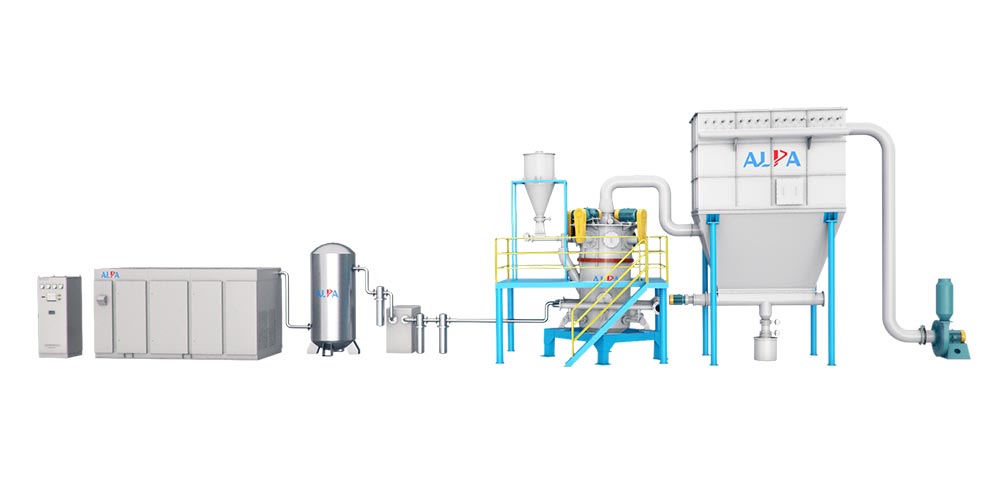
Below, I will introduce some features of the jet mill. The particles of the product can be adjusted, the particle shape is good, and the particle size distribution is relatively uniform.
- No heating, especially suitable for ultra-fine grinding of heat-sensitive materials.
When developing new materials in the laboratory, another form is to consider the way that cold air is used for mechanical pulverization and cooling, and compare the pulverization performance and the feasibility of the process, because in actual production, the mechanical pulverization function can solve many problems, as much as possible Use mechanical powder more often. Under normal circumstances, the energy consumption of the mill is very high.
- The pollution is small, because the crushing principle is the collision and crushing of the material itself. Compared with other forms of crushing, it will bring other grinding media with the blade or ball mill, and the airflow crushing pollution is the least, so it is especially suitable for the pharmaceutical and food industries.
- Easy to clean, the mill is relatively small compared to other ultra-fine pulverizers, especially the spiral jet mill, with simple structure, easy to clean, no dead ends, and can be used as a sterile medicine to pulverize.
The disadvantages are: high-power air supply equipment is required. Of course, laboratory equipment can be replaced with nitrogen gas cylinders.
Troubles and countermeasures of air classifier
In the metal powder industry, the air classifier is a common equipment. It has the function of accurately classifying and segmenting ultra-fine powder according to the particle size. It is especially suitable for iron powder, magnesium powder, stainless steel powder, aluminum powder, titanium powder, Super fine grade of alloy powder and other materials. The air current classifier is a type of dry air classification equipment. It is different from the general classification equipment with a screen. It is a centrifugal classifier with a flow field control device and a high-speed turbine rotor. In the grading process, no pollution is generated, and no temperature rises. An inert gas protection device can be added to achieve the purpose of explosion-proof and anti-oxidation.
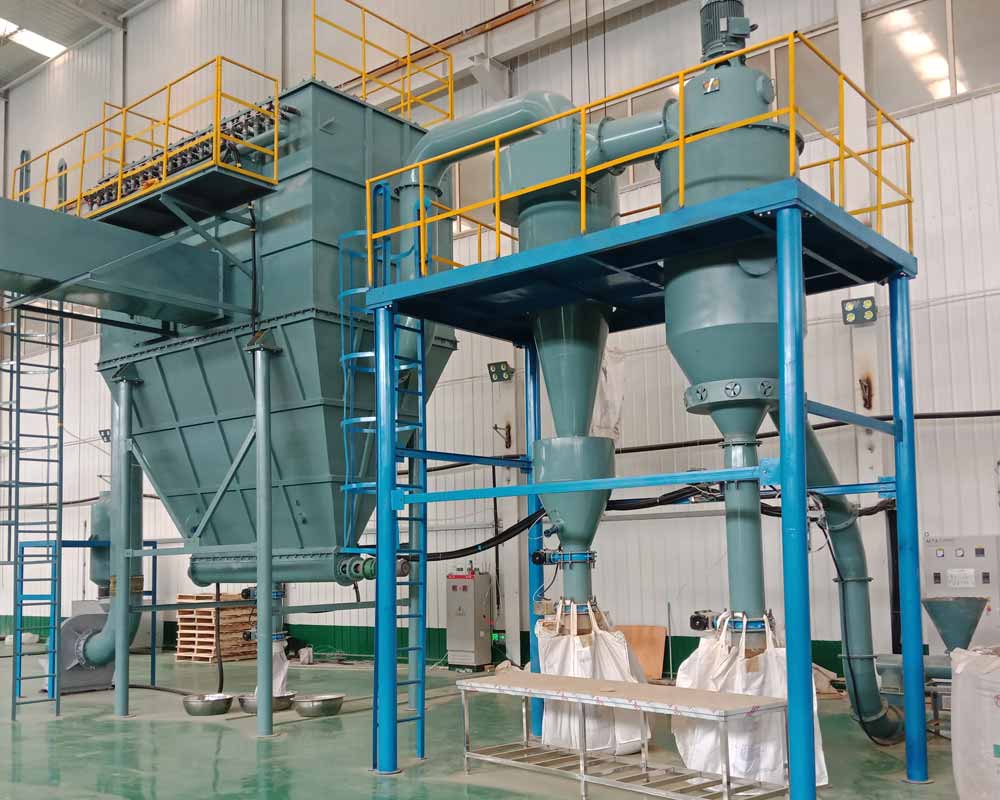
At present, air classifiers are widely used in various industries. However, in the event of a failure or an abnormal phenomenon, the supply of raw materials must be stopped quickly, and the system should be stopped according to the actual situation, and corresponding measures should be taken.
- The powder flow at the outlet of the raw material supply pipe is not uniform, or there is an obvious gas line in the middle.
Reason: There is a foreign matter blockage at the outlet of the raw material supply pipe, or there is an attachment.
Corresponding measures: remove foreign objects or attachments. The user cannot disassemble the raw material supply pipe without authorization. If there is an abnormality in the air classifier that needs to be decomposed, you should contact the supplier in time, and you need to send the spray pipe to the supplier or the supplier will send someone to maintain it.
- The powder flow of the classifier body oscillates greatly
Reasons: (1) The inlet of the raw material supply pipe is blocked: the powder attached to the wall of the inlet of the raw material supply pipe suddenly collapses due to some reason, temporarily blocking the inlet. (2) The pipeline is blocked or leaked.
Corresponding measures: The feed pipe has an adaptive function, which can balance and solve the problem by itself. At this time, there is no need to stop the machine, and the air flow classifier will recover by itself after a period of time. Sometimes it can be manually assisted in recovery. Check the leakage of pipeline blockage.
- The collection rate has changed a lot
Reasons: (1) the pipeline or the dust collector is blocked; (2) the pipeline is leaking; (3) the grading knife is severely worn.
Corresponding measures: Check the blockage and leakage of the air flow classifier pipeline or collector. Replace severely worn grading knives in time.
- Fan overload trip
Reason: The classifier body, pipeline or dust collector is blocked.
Corresponding measures: Check the blockage of the air flow classifier body, pipeline or collector.
The air classifier is a kind of mechanical equipment, so it is inevitable that it will malfunction during long-term use or improper operation. Under normal circumstances, the manufacturer of the air classifier will conduct training for the user's operator after the equipment is sold, which includes troubleshooting and troubleshooting. However, if there are some major problems, it is recommended to contact the manufacturer to achieve Quickly resolve.
How to improve the grinding efficiency of jet mill
In recent years, with the development of modern industry, ultra-fine and ultra-fine pulverization technology has received more and more attention, especially the quality of the pulverization effect of raw materials in the pharmaceutical and chemical industries directly affects the subsequent process. The jet mill is the best in the current ultrafine and ultrafine grinding equipment, especially the disc type (spiral) jet mill because of its simple structure, easy disassembly and assembly, and good grinding effect. It has won many pharmaceutical and chemical companies. Favored, it has become a typical equipment for grinding high-purity, low-fineness products.
Airflow grinder requires a complete process system. How to maximize its function and reduce loss is also a crucial issue.
The compressed air after filtering and drying of the airflow grinder brings the animal material to rub against each other, so as to achieve the grinding effect; in the process of the disc airflow grinder, 80% of the electric power consumption is in the air source part of the compressed air. Making full use of compressed air is actually saving electricity to the greatest extent. How to scientifically adjust the jet mill to run under ideal conditions to improve the efficiency of the jet mill is the concern of many user manufacturers.
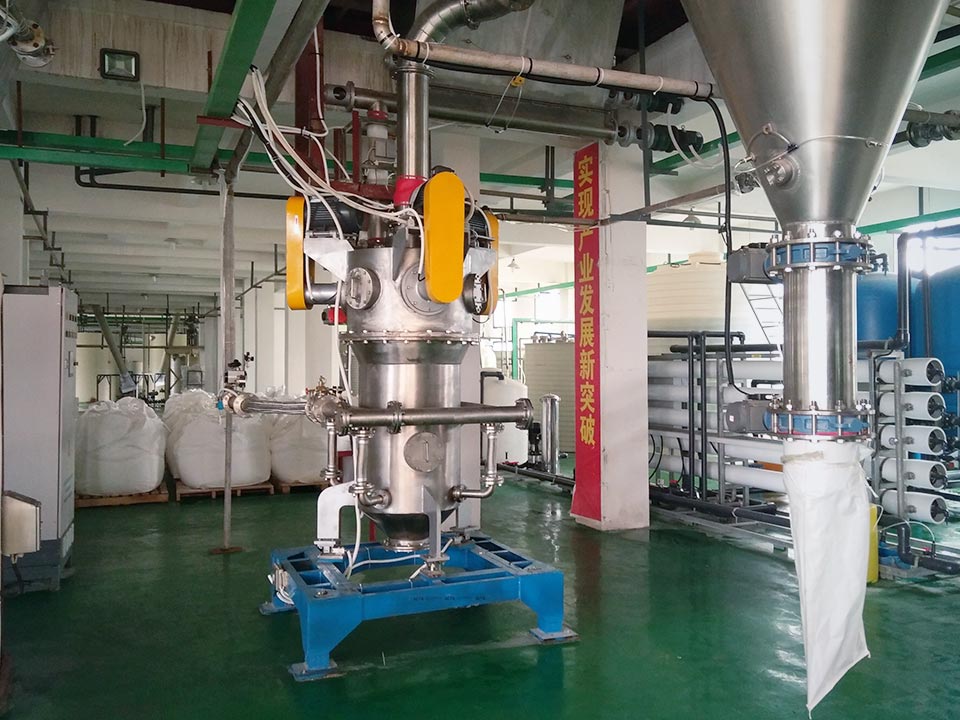
- Adjustment of feeding speed
The feeding speed determines the time for the materials to collide and grind in the grinding chamber. The feed speed is slow, the material stays in the grinding cavity for a long time, the number of particle cycles is large, and the grinding degree is more sufficient, so the grinding fineness is smaller; but too slow, the number of particles in the grinding cavity is too small, resulting in fewer collisions , Thus failing to achieve the desired effect. If the feed is too fast, there will be too much material in the grinding chamber, and the grinding fineness will be more effective.
Experiments have proved that uniform and stable feeding can ensure the stability of the swirling flow field in the grinding cavity. Adjust the feeding speed to make the gas-solid ratio in the grinding cavity reach the ideal state, so that the material particles can get the maximum and effective collision times, thereby increasing the grinding machine s efficiency.
- Change the speed of the grading ring or the grading wheel
The grading ring of the disc jet mill is equipped with grading. It is not as convenient and simple to adjust as the fluidized bed (classified) jet mill. Different materials have different properties, and the same working conditions have different smashing effects. It does not reach agreement, and requires a lot of experimental experience to get it.
Due to the rotation of the grading wheel, the internal swirling flow field in the crushing chamber is stabilized, so that the material is fully crushed, and the coarser materials can never pass through the grading wheel and can only return to the crushing chamber to continue crushing. Under the action of high-speed airflow, a large pulverization efficiency is achieved, and the fluidized bed jet mill also has certain advantages.
- Reasonable design of grinding nozzle
The shape of the nozzle is the key to reducing the energy loss at the nozzle. The compressed air passing through nozzles of different shapes will produce airflows of different speeds. Improper nozzle design and processing will directly lead to the failure of the speed of the pulverizing airflow or the more serious nozzle wear. The worn nozzle will deflect the airflow, causing part of the airflow to do work ineffectively and affect the pulverization efficiency.
- Other factors
In addition, there are other factors that should not be underestimated. For example, the hardness of the material to be ground is too hard, and the grinding cavity of the grinder is more severely worn. At this time, we need to replace the ultra-hard lining, such as ceramic corundum, which greatly reduces The abrasion of small materials to the grinding chamber and improve the purity of the collected materials.
In addition, in the pharmaceutical and chemical industries, materials that are easy to stick to walls such as moisture absorption and static electricity are often exposed. The materials adhere to the grinding cavity, discharge port, and receiver, which affects the progress of the entire process. Then you need to replace the special anti-sticking lining in the crushing chamber, spraying or lining the anti-sticking coating and lining in the receiver; reduce the length of the pipeline and the contact area of materials as much as possible, and improve the collection rate of materials. Effective antistatic equipment is also needed to treat materials containing static electricity.
After careful adjustment and maintenance, tap the potential of the jet mill, and use the machine more efficiently under the condition of ensuring the particle size index, which is of great significance for saving energy and reducing costs.
Application and development direction of wollastonite
Wollastonite is a calcium silicate mineral, belonging to a chain metasilicate, which is fibrous, radial, needle-like, and plate-like. Mohs hardness is 4.5~5.5, density is 2.75~3.10g/cm³, melting point is 1540℃.
Wollastonite is divided into two crystal forms: α and β. α crystals are usually granular and powdery; β crystals are usually fibrous and needle-like. The aspect ratio is usually 20:1, and the highest can reach 30:1. β crystal fibrous wollastonite has high whiteness, high resistance, high aspect ratio, low oil absorption, low dielectric constant, heat resistance, corrosion resistance, acid and alkali resistance, non-toxic, non-magnetic, and low thermal expansion coefficient. It has the characteristics of small loss on ignition and excellent mechanical properties, and has a certain affinity with plant fibers. In addition, ultrafine wollastonite powder is called "mineral fiber".
The main component of wollastonite is calcium silicate, the chemical formula is CaSiO3, the density is 2.9g/cm³, the Mohs hardness is 4.5, and the refractive index is 1.63.
The characteristics of wollastonite: non-toxic, good thermal stability, glass and pearl luster, excellent mechanical and electrical properties, chemical corrosion resistance, good dimensional stability, low absorption rate and oil absorption value, and a certain reinforcing effect.
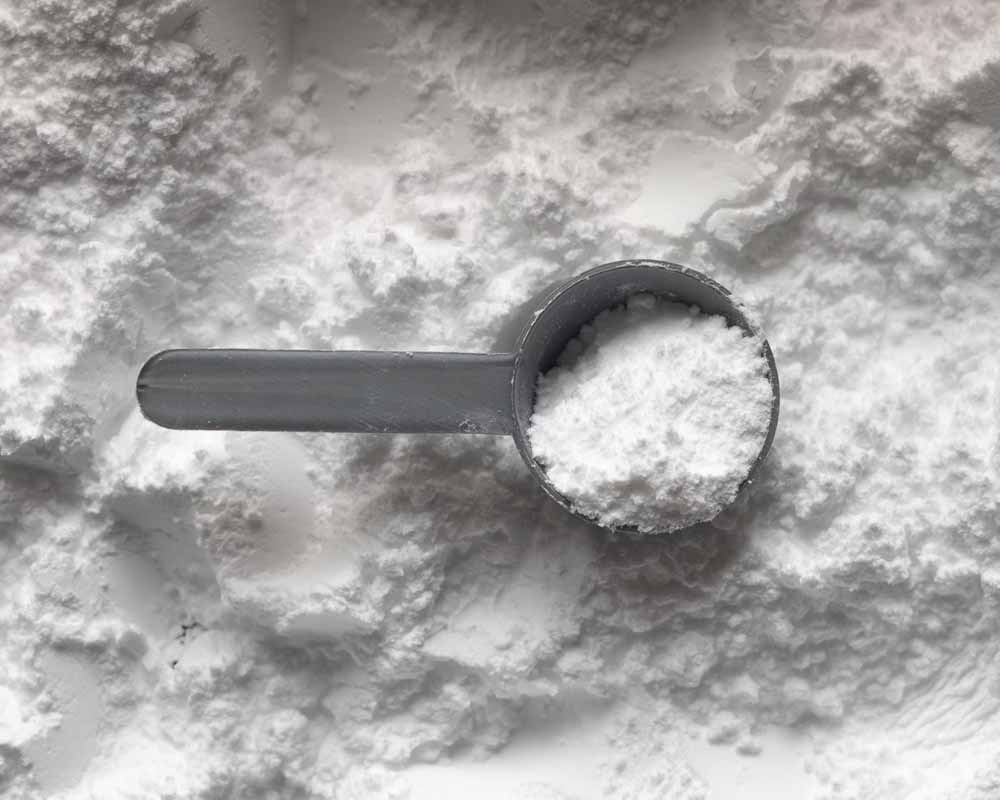
Classification of wollastonite (by purpose)
Plastic rubber grade wollastonite: It has unique needle-like fibers, good insulation, abrasion resistance, and high refractive index. It is a good filling material for plastic and rubber products.
Coating machine wollastonite powder: the coating can get better mechanical strength, increase durability, enhance adhesion and corrosion resistance, as well as good coverage and adhesion.
Paper-making grade wollastonite powder: The use of wollastonite to make paper can improve economic benefits. Each ton of ultra-fine wollastonite powder used in papermaking can save 3.6 cubic meters of wood; compared with traditional wood pulp, each ton of ultra-fine wollastonite powder used can reduce costs by 100 to 300 yuan.
Building material grade wollastonite: non-toxic, tasteless, non-radioactive and other advantages have gradually replaced asbestos, which is harmful to human health, and become a new raw material for environmentally friendly building materials in the new century.
Ceramic-grade wollastonite powder: can greatly reduce the firing temperature, shorten the firing time, realize low-temperature fast firing at one time, save a lot of dyes, and significantly reduce product costs; at the same time, improve the mechanical properties of the product.
Friction grade wollastonite powder: needle-like structure, which greatly enhances the friction and heat resistance of the finished product. When the product is filled inside, it can improve the characteristics of friction flexibility and stability.
Product classification of wollastonite
There are mainly two types of high aspect ratio wollastonite and finely ground wollastonite.
The former is a high-end product, which is mainly used in plastics, rubber, asbestos substitutes, paints, coatings and other industries based on its physical and mechanical properties. The latter is a low-end product, mainly in the English ceramics and metallurgical industries. The SiO2 and CaO components in wollastonite provide a low expansion rate and good thermal shock resistance.
Application of wollastonite
- Plastic industry
After wollastonite is processed by special equipment, it maintains a better short fiber structure and a larger length-to-diameter ratio (15:1~20:1). It is used in polyamide (PA) 6, PA66, and polypropylene. In (PP), the physical properties, mechanical properties and heat resistance stability of plastic products have been significantly improved, and they have been promoted and applied in plastic extrusion products, hollow products, blow molding products, injection molding products and various parts.
- Rubber industry
In order to improve the friction and wear properties of rubber materials, self-lubricating materials, inorganic materials and fibrous fillers are usually added to the rubber matrix. As lubricating components, there are PTFE powder, graphite and MoS2. Inorganic materials include bentonite, wollastonite, chopped basalt fiber and nano cellulose. These modified components improve the wear resistance of rubber materials to a certain extent.
- Coating industry
Wollastonite with needle-like structure (length-to-diameter ratio 10:1~20:1), acts as a flattening agent in the coating, improves the mechanical strength of the coating film, and sometimes replaces harmful asbestos in reinforced coatings. In coatings, it is generally used for finer-grained (such as 325 mesh) and fine-grained (10μm) wollastonite powder, because it is beneficial to the hiding power of the coating. Surface-treated wollastonite can be used in industrial alkyd, epoxy and other anti-corrosion coatings to improve the corrosion resistance of metal primers and partially replace active anti-rust pigments.
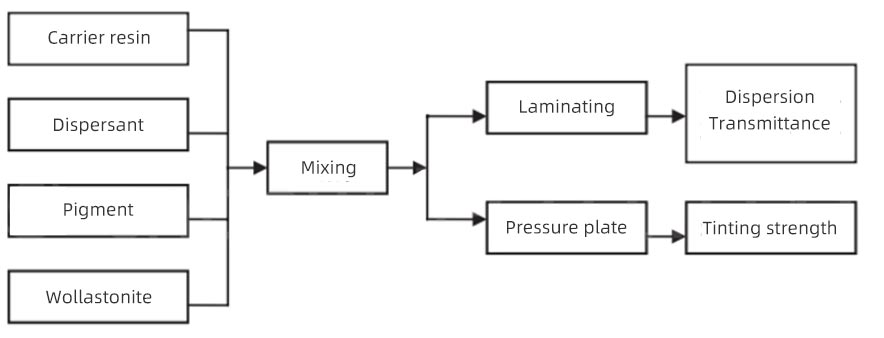
Substitution of ultra-fine needle-like wollastonite in polyethylene blue masterbatch
- Paper industry
Wollastonite powder can still maintain its unique needle-like structure after a special processing technology, so that whiteboard paper added with wollastonite powder can improve its whiteness, opacity (covering degree of the surface layer), flatness, smoothness, and adaptability. .
- Building Materials Industry
The particle size of wollastonite fiber used in the building materials industry ranges from 100 mesh to 800 mesh. The particle size, aspect ratio and purity of the fiber determine its application in different types of building materials products.
- Metallurgical Industry
About 12-15% of wollastonite in the world is used in the metallurgical industry. This is because wollastonite has low-temperature fluxing properties, stable chemical composition, high purity, and neutral alkalinity. Protective pouring provides ideal raw materials.
- Ceramic industry
Wollastonite can be used to prepare various electric porcelain, building porcelain, daily-use ceramics and brake pads.
- New material industry
The development of new materials in strategic emerging industries provides more opportunities for the application of non-metallic minerals. Wollastonite plays a role as a functional filler, and together with other non-metallic minerals, it contributes to the development and growth of the new material industry.
Development direction of wollastonite industry
- Processing technology of wollastonite needle-like powder with high aspect ratio (>15:1)
- A complete set of special processing equipment and corresponding separation equipment
- Wollastonite powder with finer particle size
- Excellent modification method and good modifier of wollastonite powder
Article source: China Powder Network
Technical characteristics of ultra-fine grinder and tips for daily maintenance
Ultra-fine grinders are now widely used in various industries. Next, we will learn about the technical characteristics of superfine grinders and the daily maintenance tips for superfine grinders.
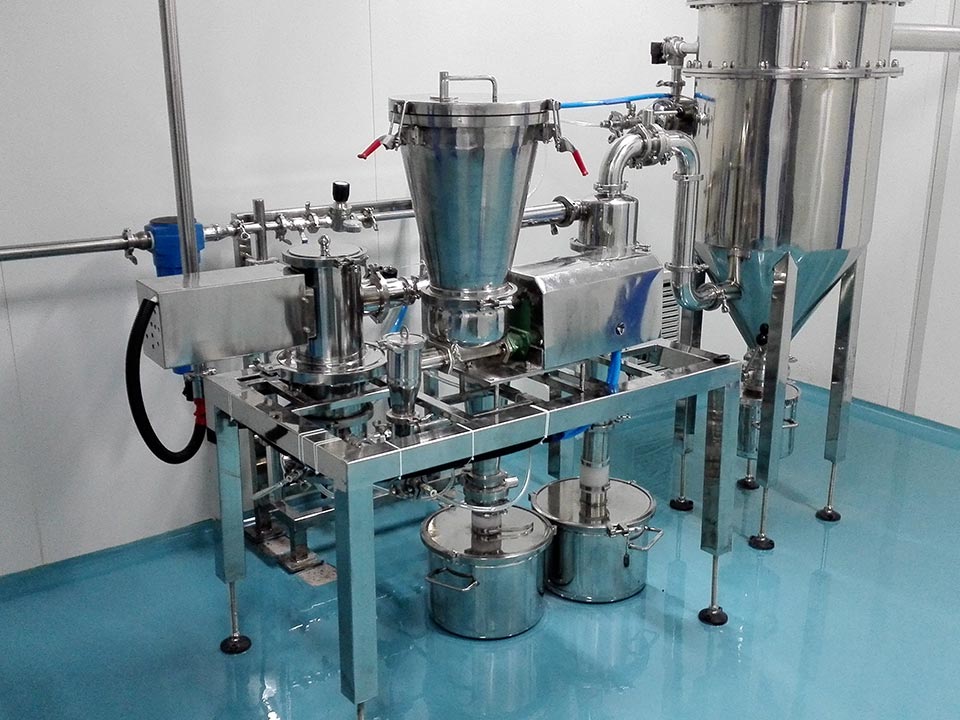
[What are the characteristics of the current applied technology of the ultrafine grinder]
1. It is small and beautiful, light in weight, and can be moved arbitrarily; it has the characteristics of simple operation, no vibration, low noise, power saving and safety, etc., especially suitable for research institutes, laboratory sample analysis, etc.
2. Ultra-high-speed motor design, vibrating ultra-fine grinding machine for medicinal materials with high crushing fineness (most medicinal materials are crushed with a fineness of 50-300 mesh); wide grinding range: Panax notoginseng, Sanqi, frankincense, myrrh, donkey-hide gelatin, dodder, Hippocampus, astragalus, etc. can grind well.
3. The speed is fast, and the grinding time of the vibrating ultrafine grinding machine is generally no more than 3 minutes.
4. It is clean and hygienic, and does not raise dust when working. The grinding groove and blade of the vibrating ultra-fine grinder are made of stainless steel, which meets the iron-free requirements of many Chinese medicines.
5. There is basically no loss of materials, and the machine is easy to clean; grinding different medicines will never cross the color and smell.
6. The operation is simple, and the personnel do not need special training.
7. The structure is durable and economical. The blade is made of special steel, which is of the same quality as the razor, and there is no need to change the knife to crush 100-200kg pieces.
[Tips for daily maintenance of superfine grinder]
1. When the bearing oil temperature rises, you must stop immediately to check the cause of the fault and eliminate it.
2. Pay attention to the degree of wear of the parts that are easy to wear, pay attention to and prepare to replace the worn parts at any time.
3. For the surface of the bottom frame where the movable device is placed, it is necessary to remove dust and other debris to avoid the phenomenon that the movable bearing cannot move on the bottom frame when the machine encounters materials that cannot be crushed, which may lead to accidents.
4. The bearing that bears all the load of the machine is the bearing, so good lubrication has a great relationship with the service life of the bearing. It can directly affect the service life and operation rate of the machine. Therefore, the cleanliness of the injected lubricating oil must meet the standard and the seal is good.
5. The installed wheel tyres are prone to looseness and must be checked frequently.
6. Pay attention to whether the working conditions of each part of the machine are normal.
7. If the rotating gear is running, if there is an impact sound, it must be stopped in time for inspection and the malfunction should be eliminated.
The functional characteristics and common problems of air classifier
The air flow classifier is a professional gas classification equipment, which is widely used in the field of product processing. So what are the performance characteristics of the air classifier? What problems often occur with air classifiers?
[What are the performance characteristics of the air classifier]
Airflow classifier is a commonly used equipment in the field of product processing. Only with a classifier can more precise raw materials be processed. Only with these extremely high-precision raw materials can companies produce better quality products.
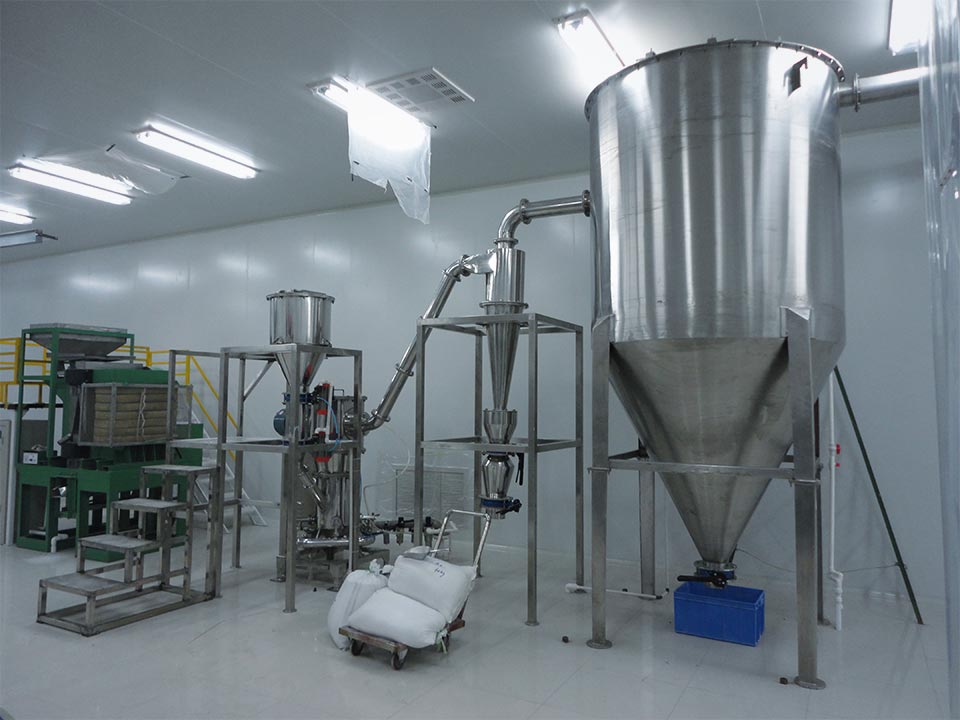
Air classifiers commonly used in enterprises generally have the following performance characteristics:
1. It is suitable for the fine classification of dry-process micron products. It can classify spherical, flake, and needle-shaped particles, and can also classify particles of different densities.
2. The particle size of the graded products can reach D97: 8~150 microns, the product size is steplessly adjustable, and the variety is extremely convenient to change.
3. The classification efficiency (extraction rate) is 60%~90%, and the classification efficiency of materials with good fluidity is high, otherwise the efficiency is reduced.
4. Vertical or horizontal grading turbine device is adopted, with low speed, wear resistance and low system power configuration.
5. Multiple air classifiers can be used in series to produce products with multiple particle sizes at the same time.
6. It can be used in series with ball mill, vibration mill, Raymond mill and other grinding equipment to form a closed loop.
7. Large output, low energy consumption and high classification efficiency.
8. The particle size is concentrated. The machine uses an original impeller for classification. The stable classification technology and special sealing measures effectively prevent the leakage of coarse particles, so that the product has no large particles, and the particle size is concentrated and the classification accuracy is high.
[What are the common problems of air classifiers]
The processing accuracy and classification accuracy of product raw materials has always been the focus of the processing industry, because in some industries product raw materials will greatly affect the related quality of a product. Air flow classifier is a kind of air flow classification equipment. The classifier, cyclone separator, dust collector, induced draft fan, etc. form a complete set of air flow classification equipment.
1. What does the wind power of the induced draft fan of the air classifier have to do with?
The wind power of the induced draft fan of the classifier is related to the actual production goal of the enterprise. The wind power is selected by examining the particle size of the related products.
2. How to debug the air grading equipment?
The adjustment of the grading machine generally depends on its equipment structure, and the spacing of the grading slices, etc., and it must be adjusted to a suitable production environment in accordance with the actual production situation.
3. What are the main applications of the air classifier?
The classifier is mainly used in the fine classification of micron-level products. The classified products can be better classified, providing reliable guarantee for the production of products by enterprises.

